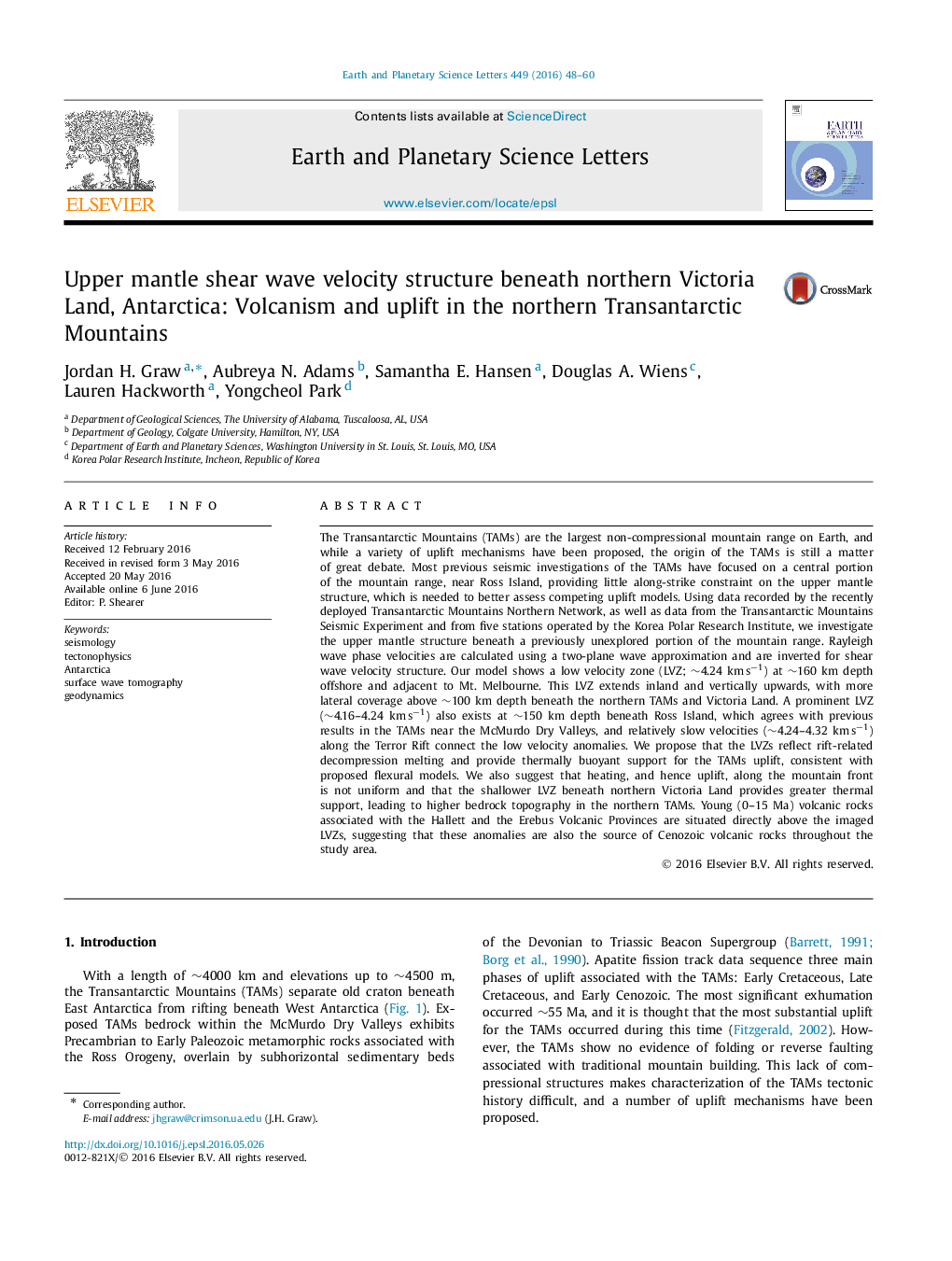| Article ID | Journal | Published Year | Pages | File Type |
|---|---|---|---|---|
| 6427363 | Earth and Planetary Science Letters | 2016 | 13 Pages |
â¢Uplift of the Transantarctic Mountains is not homogeneous along-strike.â¢Uplift of the northern Transantarctic Mountains is driven by a vertical buoyant force provided by an upper mantle thermal anomaly.â¢Active volcanism on the surface can be attributed to the upper mantle thermal anomaly.
The Transantarctic Mountains (TAMs) are the largest non-compressional mountain range on Earth, and while a variety of uplift mechanisms have been proposed, the origin of the TAMs is still a matter of great debate. Most previous seismic investigations of the TAMs have focused on a central portion of the mountain range, near Ross Island, providing little along-strike constraint on the upper mantle structure, which is needed to better assess competing uplift models. Using data recorded by the recently deployed Transantarctic Mountains Northern Network, as well as data from the Transantarctic Mountains Seismic Experiment and from five stations operated by the Korea Polar Research Institute, we investigate the upper mantle structure beneath a previously unexplored portion of the mountain range. Rayleigh wave phase velocities are calculated using a two-plane wave approximation and are inverted for shear wave velocity structure. Our model shows a low velocity zone (LVZ; â¼4.24 kmâsâ1) at â¼160 km depth offshore and adjacent to Mt. Melbourne. This LVZ extends inland and vertically upwards, with more lateral coverage above â¼100 km depth beneath the northern TAMs and Victoria Land. A prominent LVZ (â¼4.16-4.24 kmâsâ1) also exists at â¼150 km depth beneath Ross Island, which agrees with previous results in the TAMs near the McMurdo Dry Valleys, and relatively slow velocities (â¼4.24-4.32 kmâsâ1) along the Terror Rift connect the low velocity anomalies. We propose that the LVZs reflect rift-related decompression melting and provide thermally buoyant support for the TAMs uplift, consistent with proposed flexural models. We also suggest that heating, and hence uplift, along the mountain front is not uniform and that the shallower LVZ beneath northern Victoria Land provides greater thermal support, leading to higher bedrock topography in the northern TAMs. Young (0-15 Ma) volcanic rocks associated with the Hallett and the Erebus Volcanic Provinces are situated directly above the imaged LVZs, suggesting that these anomalies are also the source of Cenozoic volcanic rocks throughout the study area.
